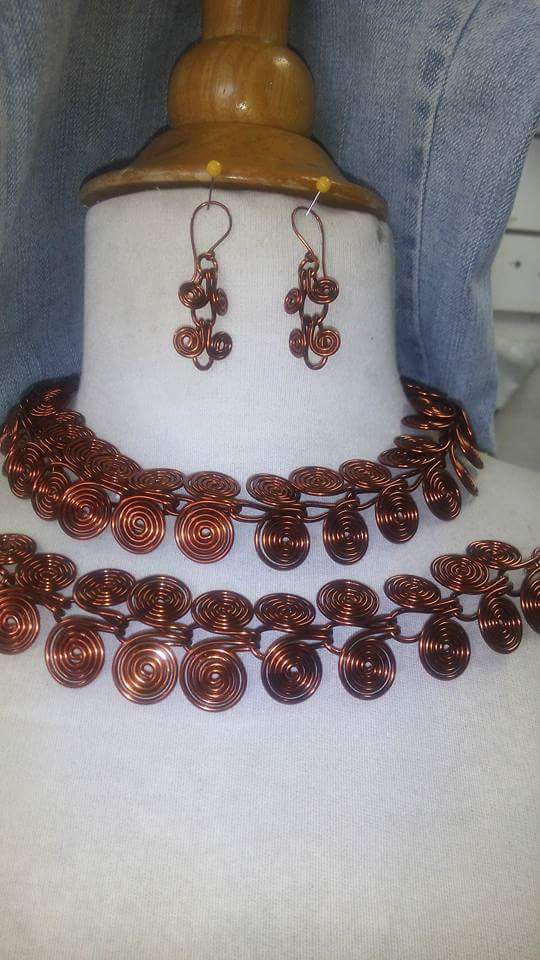From the outset, she wanted to expand the boundaries of our interview beyond the issues that we had settled on earlier. It was not, she said, that she took lightly the opportunity which the interview afforded to provide a measure of mileage for her own work. The truth was, however, that she was no less interested in exploring the broader issue of craft and the craft vendor and, more importantly, how to fashion the collection of creative industries in Guyana to transform them from “what is mostly a hustle” to the sort of lucrative pursuit that manifests itself in other countries.
We had begun on the subject of CARIFESTA X111 and even though she had queried whether that was a suitable point at which to start she agreed to let go of her preference for another starting point. In the end, the substance of our talk on CARIFESTA justified the direction that we took. She raised the issue of the dichotomy between the creative focus of the regional festival and what she believes is the legitimate expectation of craftspeople that the investment associated with being at CARIFESTA outside of Guyana gave rise to legitimate expectations that commercially, participation would be worth the while.
Against that backdrop she said, without the slightest hesitation that the imperative of Guyana making a creative contribution to CARIFESTA, notwithstanding, living in Barbados, as she was, she had become more than convinced that from a commercial perspective, the expectations of the small and micro enterprise Guyanese craftspeople who went to Barbados to participate in CARIFESTA X111, were unlikely to be realized.

Her explanation, she said, had to do with her understanding of the condition of the Barbados economy and the manner in which what was happening was impacting on the spending pattern of both the domestic consumer and the tourist. In both instances, these two sets of potential customers were feeling the edges of their dollars. There was, she says, never any reason to anticipate that that would change just for CARIFESTA. If she had her way, she said, she would have cautioned the Guyanese creative contingent about the dangers of exalted commercial expectations.
The range of Karen’s creative talents is broad. She has been an adventurist, venturing into areas of fashion design that include batik, fabric painting, dress and jewellery design and bag and hat creation. Her perspective on the sector begins with what she believes has been a historic absence of recognition by the society as a whole of the role of the creative artist. Her line of reasoning is that whereas no one would dare place an arbitrary monetary value on the skills and talents of a Doctor, for example, the work of the creative artist is “fair game.” She believes it is an affront and that the local creative industries have not done nearly enough to alter the perception that Guyanese creative artists are no more than vendors ‘hustling’ markets for goods that do not command the attention of a sufficiently significant share of the market.
The growth of the creative industries, Karen says, is also being stifled by the perception among people and institutions in authority that the industry is of no more than peripheral interest, that is ought not to anticipate the kind of attention afforded what one might call the mainstream sectors. That is why, she believes, we go to the trouble to acquire cheap plastic imports to meet seasonal demand rather than investigate the possibilities of creating our own.
When we made the point to her that the local commercial banks now appeared to have shifted their attitude to engaging small businesses, including the creative industries, Karen asserted that they still needed to do more. She believes, she says, that ready access to commercial bank loans for the creative industries can not only allow for investment in materiel and machinery that can raise standards, but can also encourage higher levels of investment in those sectors.
Here, she makes the point that tourist demand has, over the years, influenced both public and private sector investment in the creative sectors, with lending for investment coming from sources as varied as credit unions at the one extreme, and established commercial banks, on the other.
It is the same, she says, with training. When we enquired about the attractive copper jewellery ensemble that she was wearing, she told us that that had been one of the outcomes of a Wire Bending course that she had done at the Barbados Community College. “Where opportunities for skills training are concerned Barbados is well ahead of us,” Karen says. It is with the Barbados Community College that she also studied Fashion Design.
Karen’s return home from Barbados several months ago would appear to have been the result of a decision that Guyana may offer more possibilities as far as accommodating her interests is concerned. She makes no pretense at having done well commercially in Barbados; and the portents for the future, given the current economic climate in Barbados, do not appear particularly promising. These days, she says, she had “a good feeling” about her prospects at home. She is working on a coherent Business Plan that includes “teaching fashion” and creating an outlet for her own creations. At her 59 Station Street residence she is already open for business, whether it be the creation of seasonal ‘pieces’ for holiday occasions, supporting jewellery or home décor.
That being said her longer-term preoccupation is with contributing meaningfully to what she believes must be a game-changing effort to transform the creative industries; and here, she says, we are unlikely to get very far unless both the public and private sectors and the populace as a whole, chip in.






